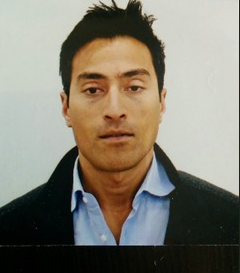Why Non-Vascular Interventional Radiology Matters: Dr. Andrew Gomes Weighs In
Why Non-Vascular Interventional Radiology Matters: Dr. Andrew Gomes Weighs In
Blog Article

The Growing Problem of Diagnostic Precision in Neurology
Exact examination is at the heart of powerful medical care, yet neurological problems remain notoriously hard to recognize with precision. Disorders such as for instance traumatic mind accidents (TBI), Alzheimer's disease, and multiple sclerosis usually present with overlapping symptoms, raising the risk of misdiagnosis. That is where sophisticated imaging strategies, like Diffusion Tensor Imaging (DTI), enjoy a major role. Experts in diagnostic radiology, including Dr. Andrew Gomes Sugar land tx, use DTI to map head task and cellular disruptions with unprecedented accuracy.
Leveraging the Energy of DTI Engineering
Diffusion Tensor Imaging (DTI) evaluates the motion of water molecules in head muscle, providing comprehensive visualizations of white subject tracts. That level of information helps radiologists discover actually the littlest structural abnormalities in the brain, giving important information for early examination and tailored treatments. Non-vascular interventional radiologists are distinctively placed to harness this technology, performing minimally unpleasant imaging procedures to get a further knowledge of neurological conditions. Dr. Andrew Gomes views this as a game-changing tool in the combat misdiagnosis.
Data-Driven Diagnostic Idea
Dr. Gomes stresses a data-driven method of radiology, advocating for the utilization of advanced imaging technologies like DTI to cut back diagnostic uncertainty. By meticulously studying individual knowledge, Dr. Gomes ensures that each examination is backed by aim, science-based evidence. He also shows the prospect of establishing DTI effects with synthetic intelligence systems to help expand improve diagnostic accuracy. His responsibility to creativity and patient-centered care remains to shape the ongoing future of diagnostic and non-vascular interventional radiology.
Connecting Engineering and Patient-Centric Care
The integration of sophisticated neuroimaging methods like DTI not merely improves the accuracy of diagnoses but in addition empowers healthcare companies to provide more precise, patient-focused treatments. By finding abnormalities early, radiologists perform a crucial position in improving outcomes and reducing the burden of neurological diseases. Professionals like Dr. Andrew Gomes remain at the lead of radiological breakthroughs, ensuring engineering is used to its highest potential in the continuing vision to fight misdiagnosis and lift individual care. Report this page